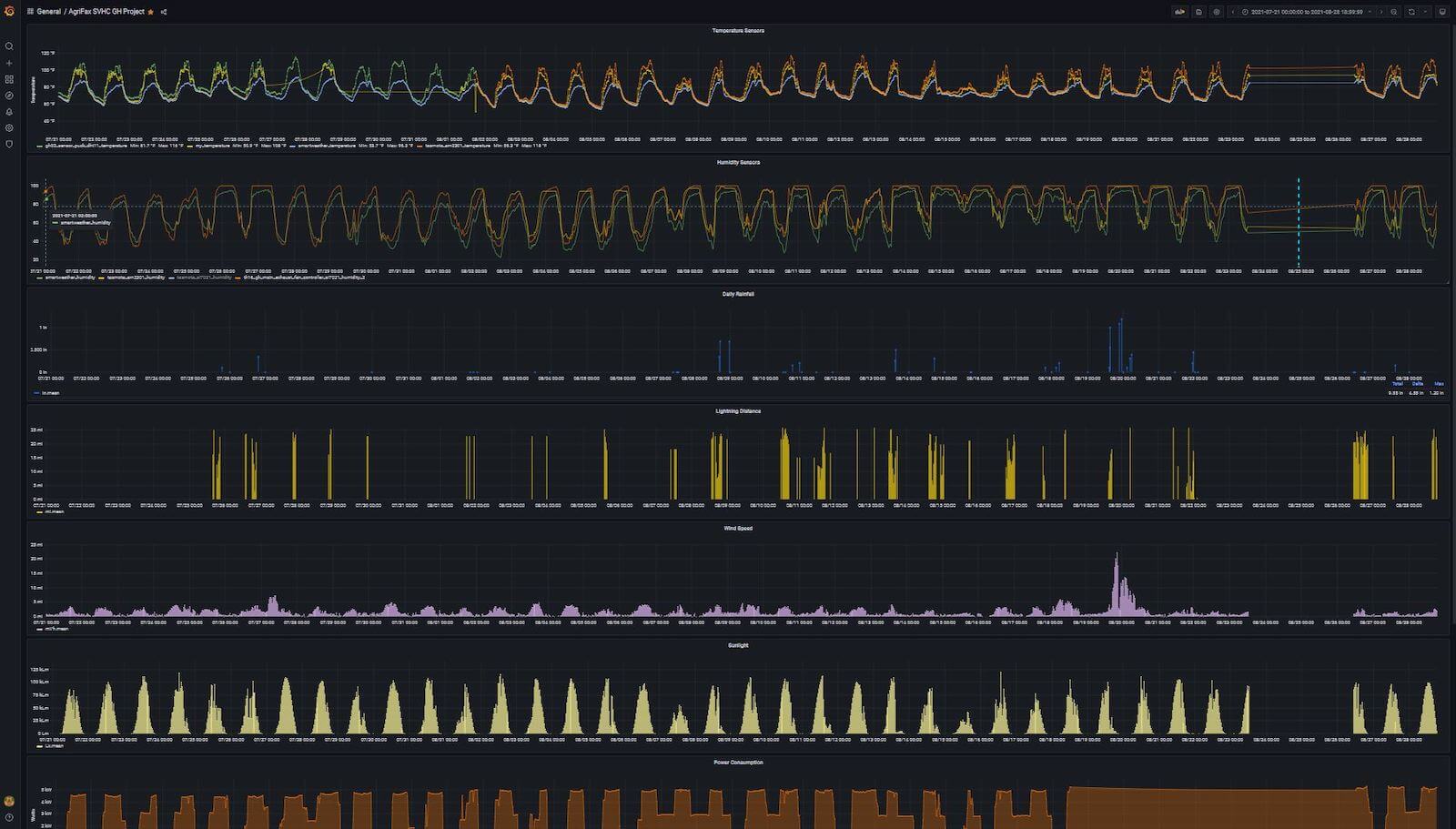
How AgriTech used IoT and Grafana to help industrial hemp farmers hit a new production high
In 2019, Alexander Mann was working in the microchip industry, putting in 12-hour shifts that left no time for him to tend to his large vegetable garden. “I started looking for ways that I could remotely water or check on my plants,” he says.
Products that could help him were either too costly for a hobby gardener or required special internet connections, so Mann decided to learn about IoT and create his own setup. Within a year, he had his own “garden bot” with a multitude of environmental sensors. Combining that with a drone allowed him to care for his garden even when he wasn’t there.
That personal project quickly grew into AgriTech, Mann’s Virginia-based agricultural tech consulting company. The company uses sensor data analytics, AI, IoT, and Grafana to help farmers improve their crop health, maximize their yield (and resulting profits), cut costs, and offset their CO2 emissions.
Today, AgriTech has a close partnership with Pure Shenandoah, one of the largest industrial hemp fiber growers in Virginia. Unlike the more well known flowering cannabis plants, industrial hemp is not for human consumption. The raw fiber can be manufactured to create building materials (hemp-crete!), woven fabric, toilet paper, and more. Growing industrial hemp had been outlawed for years, and Mann says the data they monitor with Grafana allows farmers to reclaim knowledge about best growing practices.
In 2020, Pure Shenandoah grew 15 acres as a pilot project, which yielded roughly 8,800 pounds of industrial hemp fiber. Thanks to AgriTech, in 2021 they scaled to grow a little more than 200 acres, which yielded 750,000 pounds of fiber. This year, Pure Shenandoah is on track to plant more than 800 acres of industrial hemp fiber across more than 20 partner farms in Virginia.
Seeds of development
To build his monitoring solution, Mann started with a Raspberry Pi and the Python-based Home Assistant OS, then began utilizing the Grafana add-on on his Raspberry Pi server as a local container. He set up a Tempest weather station to monitor the temperature and other data, and used Tempest’s API to feed the data directly into InfluxDB. From there, it goes directly into Grafana.

Ideally, Mann aims to have about 70 environmental data points coming in every 60 seconds, and they will dig into details such as soil pH and UV exposure.
The dashboard below provides a snapshot of 90 days worth of data points coming in from one of Pure Shenandoah’s greenhouses. It visualizes data for temperature and humidity sensors, rain, wind speed, and more.

Harvesting results
The management system that Mann set up for Pure Shenandoah includes its own app that features several custom Grafana dashboards, which centralize information for faster and better decision-making.
Visualizing the rising temperature and rapidly falling humidity in a greenhouse in real time (as seen below) allows a farmer to easily tell that the plants needed water at a specific time to offset evaporation. Mann also set up alerts in Grafana so the Pure Shenandoah team can detect a problem before any real damage to their plants (and profits) is done.

Sowing the future
Mann is confident that AgriTech can help create jobs, support farmers, and enrich communities. “I really want to do everything I can to teach people about the benefits of industrial hemp and how technology can be utilized for good in the agricultural space,” he says.
To find out more about how AgriTech is using Grafana, read their full success story.



